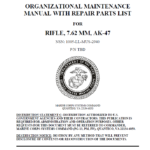
This manual contains operating instructions, maintenance procedures, and troubleshooting procedures for the rifle, 7.62 mm, AK-47. It is divided into five chapters.
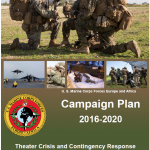
The U.S. Marine Corps Forces Europe and Africa Campaign Plan 2016-2020 defines the organization’s desired baseline operating conditions and capabilities beyond a one-year planning and execution cycle and directs action to achieve desired end states. The Campaign Plan synthesizes strategic guidance provided by U.S. European Command (USEUCOM), U.S. Africa Command (USAFRICOM), and Headquarters Marine Corps (HQMC); accounts for the Commanders’ priorities and vision; establishes a deliberate yet broadly-defined multi-year plan to achieve stated objectives; and provides a framework for implementation, periodic assessment, and refinement.
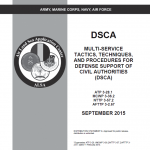
This publication identifies multi-Service tactics, techniques, and procedures (MTTP) for Defense Support of Civil Authorities (DSCA). At the tactical level, it assists military planners, commanders, and individual Department of Defense (DOD) components employing military resources and integrating with National Guard Civil Support activities while responding to domestic emergencies in accordance with United States (US) law.
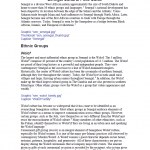
Senegal is a diverse West African nation approximately the size of South Dakota and home to more than 36 ethnic groups and languages. Senegal’s national development has been shaped by its location between the edge of the Sahara and the Atlantic. Trans-Saharan trade brought Islam and Arab influences to Senegal through North Africa. Later, Senegal became one of the first African countries to trade with Europe through the Atlantic seaways. Today, Senegal is seen by the Senegalese as a bridge between Black African, Islamic, and European civilizations.
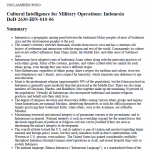
Indonesia is a geographic mixing point between the traditional Malay peoples of most of Southeast Asia and the Austronesian peoples to the east. The country’s territory stretches thousands of miles from east to west and has a centuries-old history of settlement and interaction with the region and rest of the world. Consequently its culture and society reflect influences from China, India, the Middle East, and other areas of Southeast Asia.
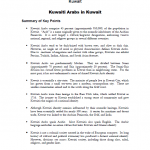
Kuwaiti Arabs comprise 45 percent (approximately 950,000) of the population in Kuwait. “Arab” is a name originally given to the nomadic inhabitants of the Arabian Peninsula. It is now largely a cultural/linguistic designation, embracing various national, regional, and religious groups in several different countries.
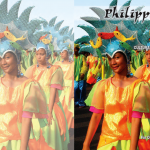
The Philippines Cultural Field Guide is designed to provide deploying military personnel an overview of the Philippines’ cultural terrain. In this field guide, the Philippines’ cultural history has been synopsized to capture the more significant aspects of the Philippine cultural environment, with emphasis on factors having the greatest potential to impact operations.
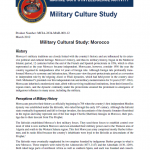
Morocco’s military traditions are closely linked with the country’s history and are influenced by its extensive political and cultural heritage. Morocco’s history, and thus its military history, began in the Medieval Islamic period, 12 centuries before the end of the French and Spanish protectorate in 1956, which is often represented as the year Morocco became independent. Moroccans, however, consider 1956 the year the country regained its independence after 44 years of foreign rule. Although foreign rule profoundly transformed Morocco’s economy and infrastructure, Moroccans view the post-protectorate period as a reversion to independent rule by the reigning Alawi or Filali dynasties, which had held power in the country since 1660. Mohamed V presided over this independent rule and military modernization for 34 years (1927–1961). Moroccans inherited a modernized state, albeit with surviving traditional institutions, from their former European rulers, and the dynastic continuity under the protectorate ensured the prominent re-emergence of indigenous influence in many areas, including the military.
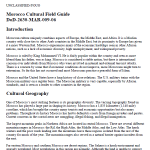
Moroccan culture uniquely combines aspects of Europe, the Middle East, and Africa. It is a Muslim country with close ties to other Arab countries in the Middle East, but its proximity to Europe has given it a more Western feel. Morocco experiences many of the economic hardships seen in other African nations, such as a lack of economic diversity, high unemployment, and widespread poverty.
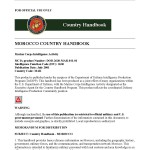
This handbook provides basic reference information on Morocco, including the geography, history, government, military forces, and the communications, and transportation network Morocco. This information is intended to familiarize military personnel with local customs and area knowledge in an effort to assist them during their assignment to Morocco.
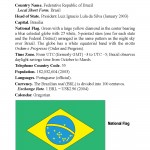
This handbook provides basic reference information on Brazil, including its geography, history, government, military forces, and communications and transportation networks. This information is intended to familiarize military personnel with local customs and area knowledge to assist them during their assignment to Brazil.
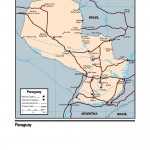
This handbook provides basic reference information on Paraguay, including its geography, history, government, military forces, and communications and transportation networks. This information is intended to familiarize military personnel with local customs and area knowledge to assist them during their assignment to Paraguay.
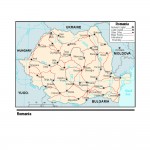
This handbook provides basic reference information on Romania, including its geography, history, government, military forces, and communications and transportation networks. This information is intended to familiarize military personnel with local customs and area knowledge to assist them during their assignment to Romania.
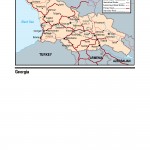
This handbook provides basic reference information on Georgia, including its geography, history, government, military forces, and communications and transportation networks. This information is intended to familiarize military personnel with local customs and area knowledge to assist them during their assignment to Georgia.
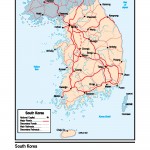
This handbook provides basic reference information on South Korea, including its geography, history, government, military forces, and communications and transportation networks. This information is intended to familiarize military personnel with local customs and area knowledge to assist them during their assignment to South Korea.
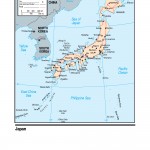
This handbook provides basic reference information on Japan, including its geography, history, government, military forces, and communications and transportation networks. This information is intended to familiarize military personnel with local customs and area knowledge to assist them during their assignment to Japan.
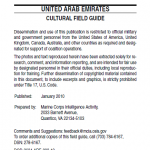
The United Arab Emirates Cultural Field Guide is designed to provide deploying military personnel an overview of UAE’s cultural terrain. In this field guide, UAE’s cultural history has been synopsized to capture the more significant aspects of the country’s cultural environment, with emphasis on factors having the greatest potential to impact operations.
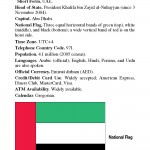
This handbook provides basic reference information on the United Arab Emirates, including its geography, history, government, military forces, and communications and transportation networks. This information is intended to familiarize military personnel with local customs and area knowledge to assist them during their assignment to the United Arab Emirates.
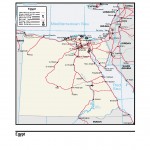
This handbook provides basic reference information on Egypt, including its geography, history, government, military forces, and communications and transportation networks. This information is intended to familiarize military personnel with local customs and area knowledge to assist them during their assignment to Egypt.
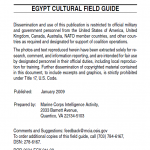
The Egypt Cultural Field Guide is designed to provide deploying military personnel an overview of Egypt’s cultural terrain. In this field guide, Egypt cultural history has been synopsized to capture the more significant aspects of the Egypt cultural environment, with emphasis on factors having the greatest potential to impact operations.
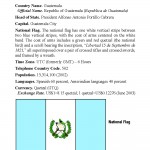
This handbook provides basic reference information on Guatemala, including its geography, history, government, military forces, and communications and transportation networks. This information is intended to familiarize military personnel with local customs and area knowledge to assist them during their assignment to Guatemala.
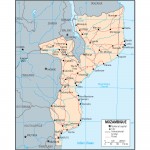
This handbook provides basic reference information on Mozambique, including its geography, history, government, military forces, and communications and transportation networks. This information is intended to familiarize military personnel with local customs and area knowledge to assist them during their assignment to Mozambique.
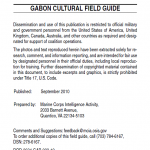
The Gabon Cultural Field Guide is designed to provide deploying military personnel an overview of Gabon’s cultural terrain. In this field guide, Gabon’s cultural history has been synopsized to capture the more significant aspects of the country’s cultural environment, with emphasis on factors having the greatest potential to impact operations.
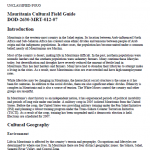
Mauritania is the westernmost country in the Sahel region. Its location between Arab-influenced North Africa and Sub-Saharan Africa has created some ethnic divides and tensions between people of Arab origin and the indigenous populations. In other cases, the population has become united under a common belief; nearly all Mauritanians are Muslim. Most of the country is desert, making life in Mauritania difficult. In the past, northern populations were nomadic herders and the southern populations were sedentary farmers. Many continue these lifestyles today, but desertification and droughts have severely reduced the amount of fertile land in Mauritania.This has hurt herders and farmers. Many have had to abandon their lifestyles to attempt make a living in the cities. As a result, most Mauritanian cities are overcrowded and have high unemployment rates.